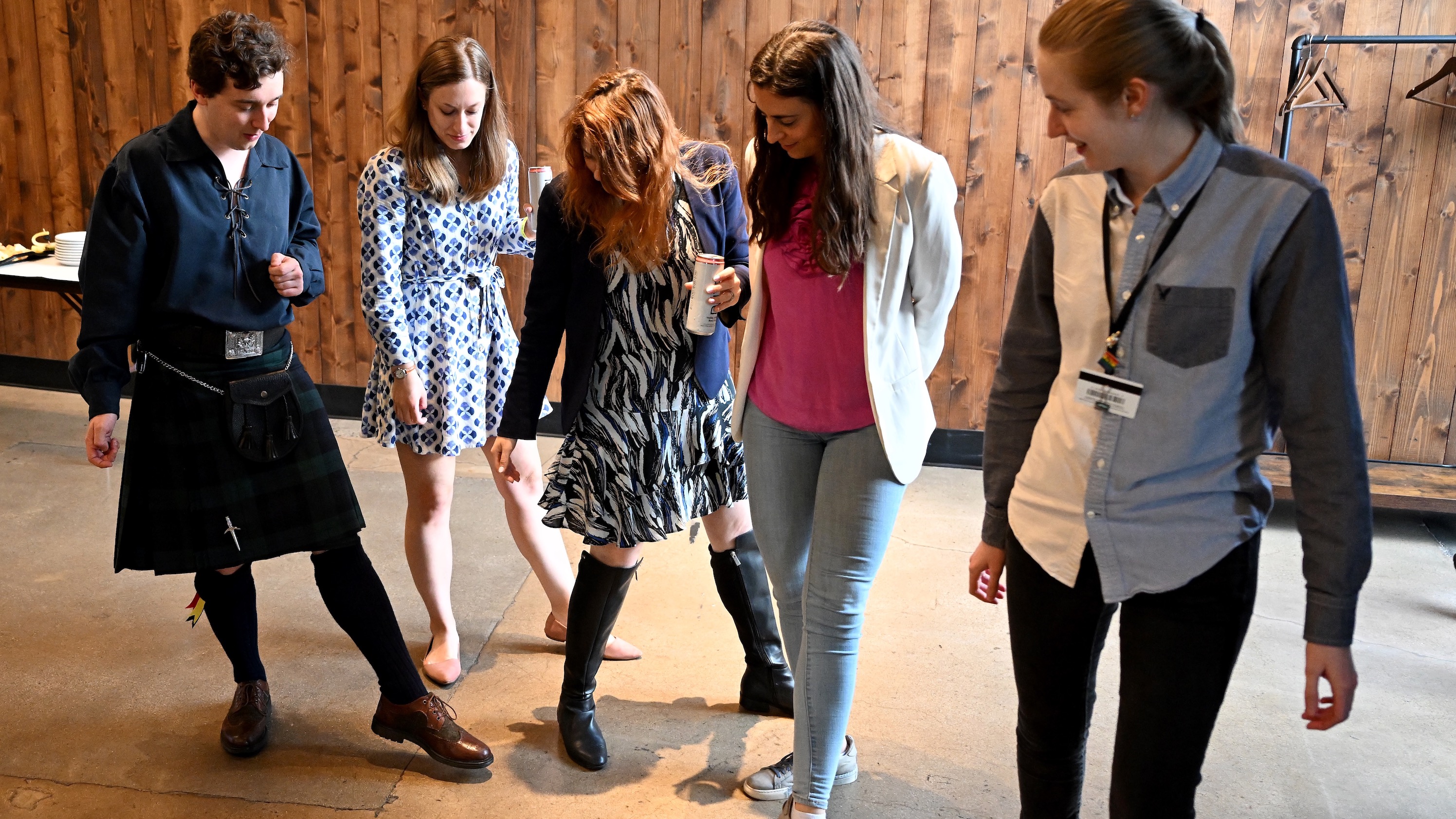Craig Thorburn / The learning and usage of second language speech sounds: A computational and neural approach

Craig Thorburn / The learning and usage of second language speech sounds: A computational and neural approach
June 9, Craig Thorburn defends his dissertation, "The learning and usage of second language speech sounds: A computational and neural approach," directed by Naomi Feldman, with a committee of Ellen Lau, Bill Idsardi, Philip Resnik and Dean's Representative Jonathan Simon. The abstract follows.
The learning and usage of second language speech sounds
Language learners need to map a continuous, multidimensional acoustic signal to discrete
abstract speech categories. The complexity of this mapping poses a difficult learning problem, particularly for second language learners who struggle to acquire the speech sounds of a non- native language, and almost never reach native-like ability. A common example used to illustrate this phenomenon is the distinction between /r/ and /l/ (Goto, 1971). While these sounds are distinct in English and native English speakers easily distinguish the two sounds, native Japanese speakers find this difficult, as the sounds are not contrastive in their language. Even with much
explicit training, Japanese speakers do not seem to be able to reach native-like ability. (Logan,
Lively, & Pisoni, 1991; Lively, Logan, & Pisoni, 1993).
In this dissertation, I investigate effective learning paradigms for acquiring speech sounds in
a second language and how these representations can be used during online sentence processing.
I first study a particularly effective learning— a video game paradigm where non-native speech sounds have functional significance (Lim & Holt, 2011). I formalize this paradigm computationally and implement a deep reinforcement learning network to map between environmental input and actions. I take this paradigm alongside theories of Dual Learning Systems in auditory category learning (Chandrasekaran, Yi, & Maddox, 2014) and propose a novel split where dif-
ferent learning systems are able to update different stages of the acoustic-phonetic mapping from speech to abstract categories.
Finally, I study how these categories could be used during online processing through an MEG study where second-language learners of English listen to continuous naturalistic speech. I show that despite the challenges of speech sound learning, second language listeners are able to predict upcoming material integrating different levels of contextual information and show similar responses to native English speakers. I discuss the implications of these findings and how the could be integrated with literature on the nature of speech representation in a second language.

